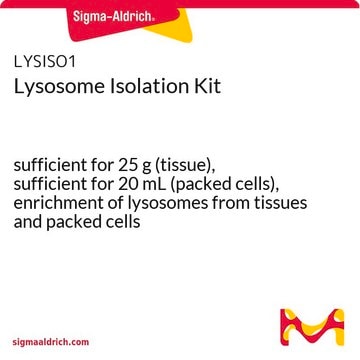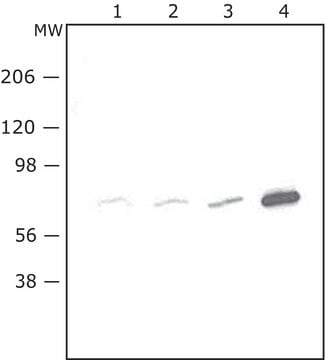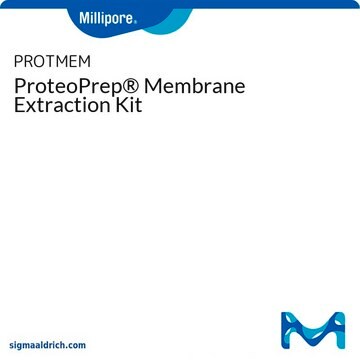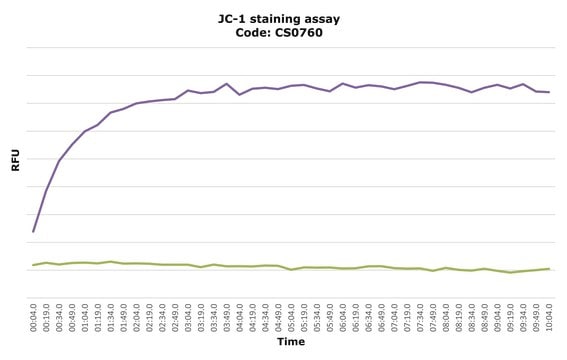The Endoplasmic Reticulum Isolation Kit does not contain membrane proteins and peripheral membrane proteins. The kit includes the following components:
• Isotonic Extraction Buffer 5× (100 mL): Contains 50 mM HEPES (pH 7.8), 1.25 M sucrose, 5 mM EGTA, and 125 mM KCl.
• Hypotonic Extraction Buffer 10× (10 mL): Contains 100 mM HEPES (pH 7.8), 10 mM EGTA, and 250 mM KCl.
• Calcium Chloride Solution (5 mL): A 2.5 M CaCl2 solution.
• OptiPrep™ Density Gradient Medium (100 mL): A 60% (w/v) solution of iodixanol in water.
• Needle (4 inch, 20 gauge): One each.
ER0100
Endoplasmic Reticulum Isolation Kit
isolation of intact ER from mammalian soft tissues and cultured cells
Synonym(s):
ER isolation kit
About This Item
Recommended Products
General description
Application
Features and Benefits
- Specially formulated extraction reagents for research scale applications - save time and minimize waste
- Includes a calcium chloride solution - for quick and simple precipitation of rough ER without need for ultracentrifugation
- Produces functional, intact organelles - resulting ER are suitable for functional studies, lipid metabolism, and protein profiling
- Compatible with products for structure confirmation - easily confirm intactness with companion kit test for cytochrome C reductase (CY0100)
- Can be used to isolate ER from soft animal tissues and cultured cells
related product
Signal Word
Warning
Hazard Statements
Precautionary Statements
Hazard Classifications
Eye Irrit. 2
Storage Class Code
10 - Combustible liquids
WGK
WGK 1
Choose from one of the most recent versions:
Certificates of Analysis (COA)
Don't see the Right Version?
If you require a particular version, you can look up a specific certificate by the Lot or Batch number.
Already Own This Product?
Find documentation for the products that you have recently purchased in the Document Library.
Customers Also Viewed
Articles
Centrifugation separates organelles based on size, shape, and density, facilitating subcellular fractionation across various samples.
Centrifugation separates organelles based on size, shape, and density, facilitating subcellular fractionation across various samples.
Centrifugation separates organelles based on size, shape, and density, facilitating subcellular fractionation across various samples.
Centrifugation separates organelles based on size, shape, and density, facilitating subcellular fractionation across various samples.
-
Does the Endoplasmic Reticulum (ER) obtained with the Endoplasmic Reticulum Isolation kit contain membrane proteins and peripheral membrane proteins?
1 answer-
Helpful?
-
-
What level of purity of endoplasmic reticulum (ER) can be anticipated when utilizing the Endoplasmic Reticulum Isolation kit with low, medium, or ultra centrifugation?
1 answer-
When using low and medium-speed centrifugation steps, the resulting preparations are generally expected to be crude. To achieve an expectation of purity, it is advisable to follow the ultracentrifugal procedure. Notably, during quality control, no specific purity specifications were found. The Specification Sheet merely indicates that the kit must be suitable. Purity levels may fluctuate based on factors such as tissue type, specimen age, and other variables. If there are concerns about mitochondrial or other impurities, it would be prudent to test for mitochondrial markers in the collected ER fraction. Additionally, the level of purity is likely to vary depending on the carefulness with which the different fractions are collected.
Helpful?
-
Active Filters
Our team of scientists has experience in all areas of research including Life Science, Material Science, Chemical Synthesis, Chromatography, Analytical and many others.
Contact Technical Service
















